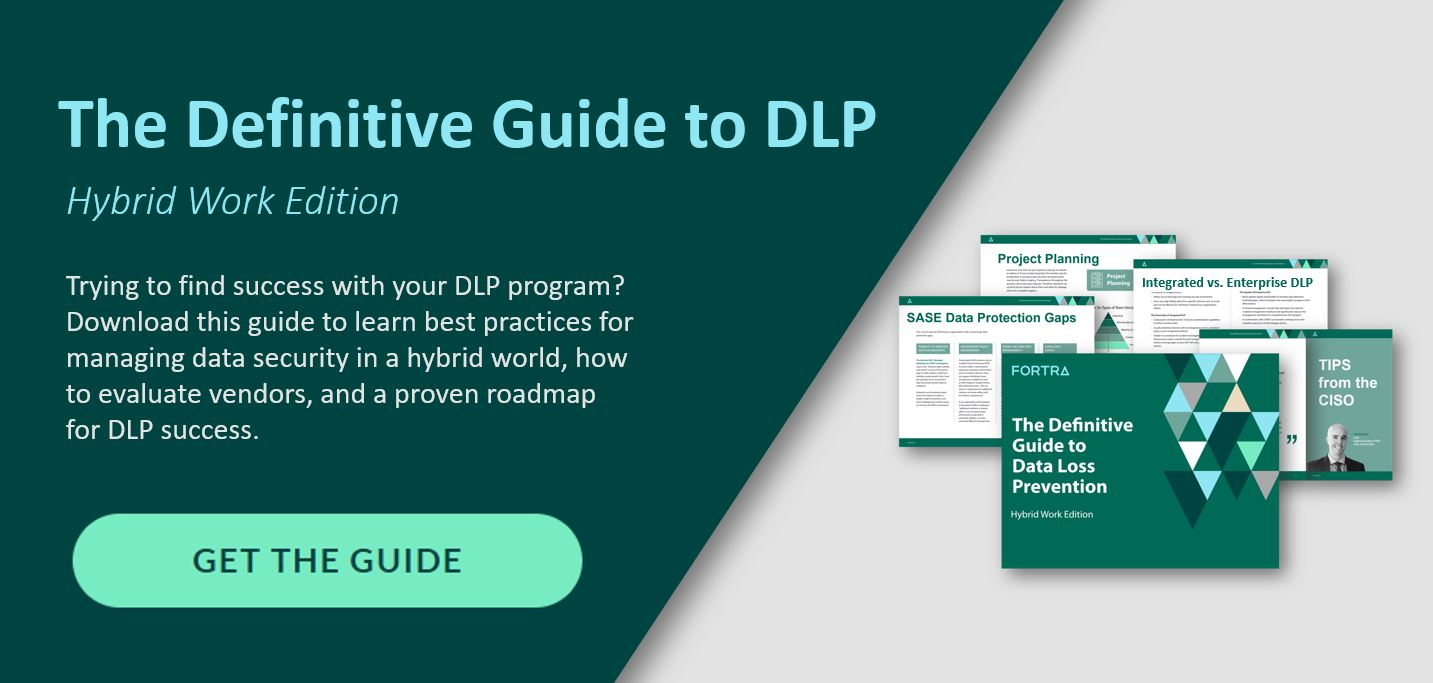A Definition of DLP as a Service
Data loss prevention (DLP) is a type of software that protects sensitive data against unauthorized access, use, sharing, or other egress. DLP solutions also assist network administrators in controlling which data end users may transfer. In 2014 Gartner identified DLP as the fastest growing segment of IT security and predicted a CAGR of nearly 19% through 2018. In the same report, Gartner also predicted that more than half of companies would rely on managed services for data protection, security risk management, and security infrastructure management by 2018. DLP as a service is becoming a popular example of these managed data protection offerings.
Data loss and security breaches are an issue for any business. For those organizations that don’t have the technology, expertise, or budget to implement and manage their own DLP program in house, DLP as a service has emerged as a smart alternative. DLP as a service gives organizations immediate access to DLP technologies that continually monitor for and protect against insider threats and attempts at data exfiltration, managed by the DLP vendor’s own team of security analysts.
How DLP as a Service Works
DLP as a service offers the same protection as on-site DLP solutions, but it ensures continuous monitoring and protection without the staffing and expertise required to manage a DLP program in house. DLP as a managed service works for any organization at any time because it is deliverable anywhere and enables rapid deployment and scalability. Overall, DLP as a service simplifies and expedites DLP deployment and integration into existing environments. Here is an example of a DLP as a service architecture:

As is the case with on-premises data loss prevention solutions, DLP managed services require deployment of DLP software agents or network appliances in the customer organization’s IT environment. However, all management and administration of a managed DLP service is hosted in the cloud, enabling access for both the customer’s security team and the DLP vendor’s managed security team. The data generated by the DLP solution is streamed to the cloud in real time, where the DLP provider’s managed security staff can then monitor, deploy controls, and respond to alerts. DLP service providers can also issue reports and alerts to organizations’ infosec teams to ensure they are kept up to date with any potential threats or incidents.
Benefits of DLP as a Service vs. On-Premises DLP
Companies today rely on email, collaboration tools, mobile devices, and other technologies that promote productivity. However, all of these technologies that connect companies – including their workers, contractors, suppliers, partners, and other business partners – also put organizations at risk, as individuals often are given access to corporate networks and sensitive data to help them do their jobs. A Raytheon study, as reported by BusinessNewsDaily, found that employees often are given higher access privileges than necessary for their specific roles and responsibilities, which results in additional opportunities for misusing or stealing data.
There obviously is a need for DLP solutions. However, on-site DLP solutions can be too complex for organizations that lack in-house security expertise, or too costly for smaller or midsize organizations. The cloud helps deliver DLP as a service to organizations that face these obstacles. DLP managed services make it possible for organizations of all sizes to quickly deploy DLP solutions and manage policies more easily, without burdening limited in-house resources or budgets.
One of the most significant benefits of choosing DLP as a service is gaining more protection from other customers’ experiences. As signs of malware and other intrusions occur, DLP as a service providers can deploy protective policies across their entire customer base to help defend them against the same security issues. Incorporating threat intelligence from hundreds or thousands of DLP deployments around the world means that DLP as a service customers can keep up with emerging threats and ensure proactive protection before they are even targeted by a new type of attack.
Best Practices for Choosing the Right DLP Managed Service
Most DLP as a service solutions include basic features such as monitoring and policy management and include policy packages for meeting compliance standards such as HIPAA, PCI DSS, and others. Leading DLP as a service providers build on these core features with the following options:
- Customized policy creation and reporting
- 24/7 monitoring of alerts and activity
- Additional data protection features available as a service such as advanced threat protection
- Flexible deployment and management architectures for customers that have policies against cloud-based managed security services
When choosing a DLP managed service provider, ensure that your provider has a team in place to handle the tough work involved in endpoint DLP, such as hosting, setup, ongoing monitoring, analyzing, tuning, and maintenance. You should look for a DLP as a service that offers a fully-managed DLP infrastructure, context-first classification, full data visibility, alerting and incident escalation, a live and configurable reporting dashboard, and ongoing improvement of your security posture through customized policy creation and tuning.
DLP as a service is a proven way to protect sensitive data and confidential information. DLP as a service is a smart alternative to on-premises DLP that improves data visibility and data security and often is a better defense against leaks, incidents, and intrusions than organizations can manage on their own with an on-site DLP solution.


